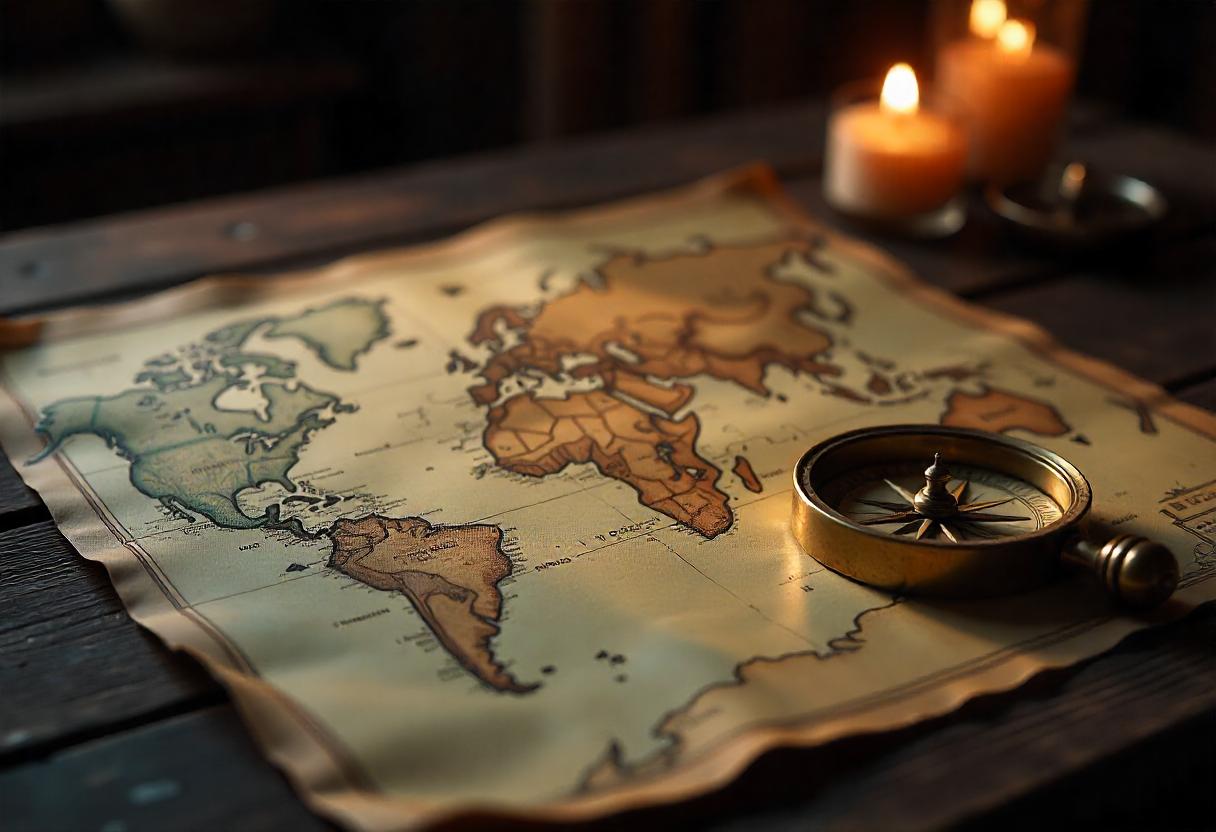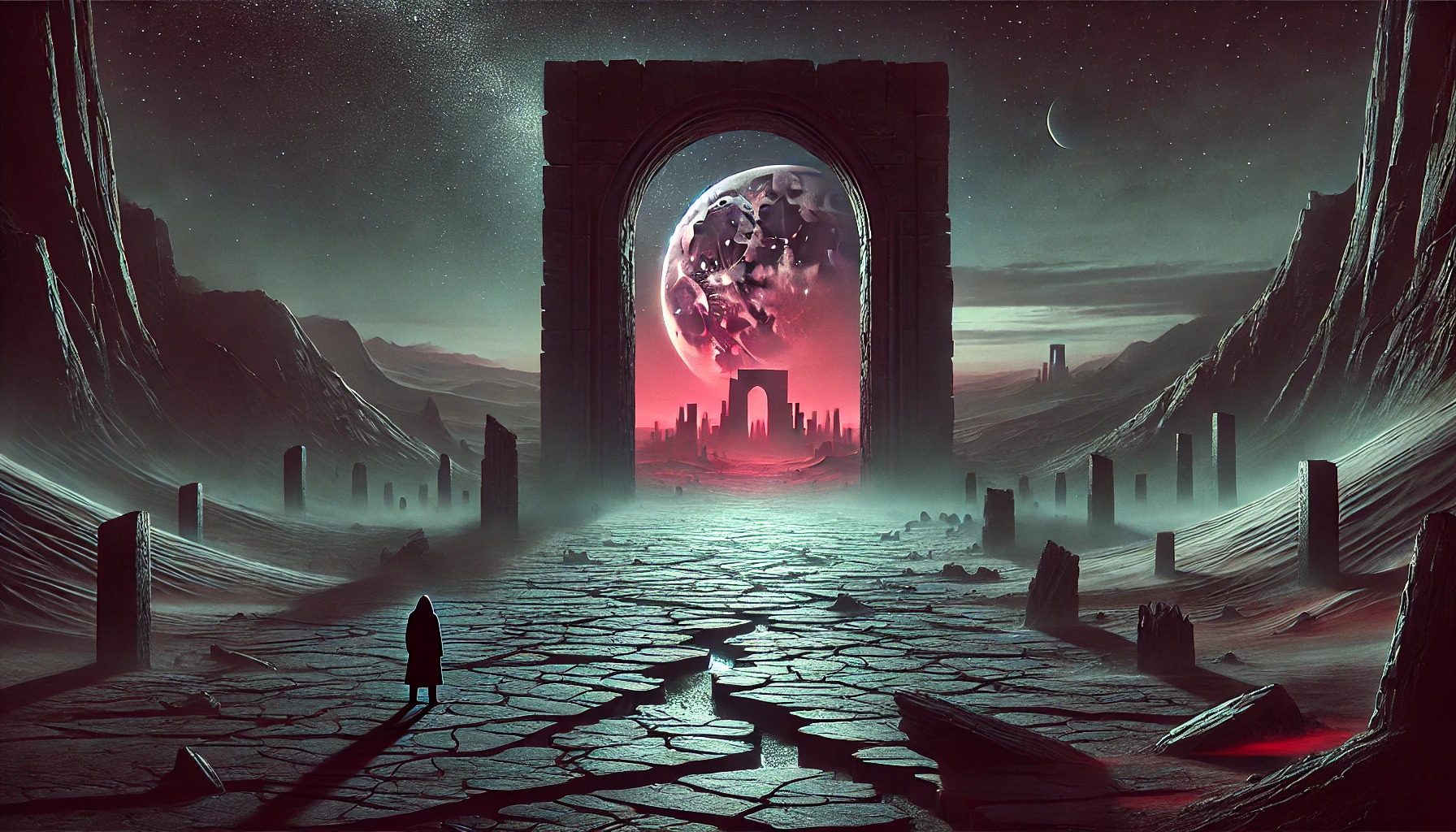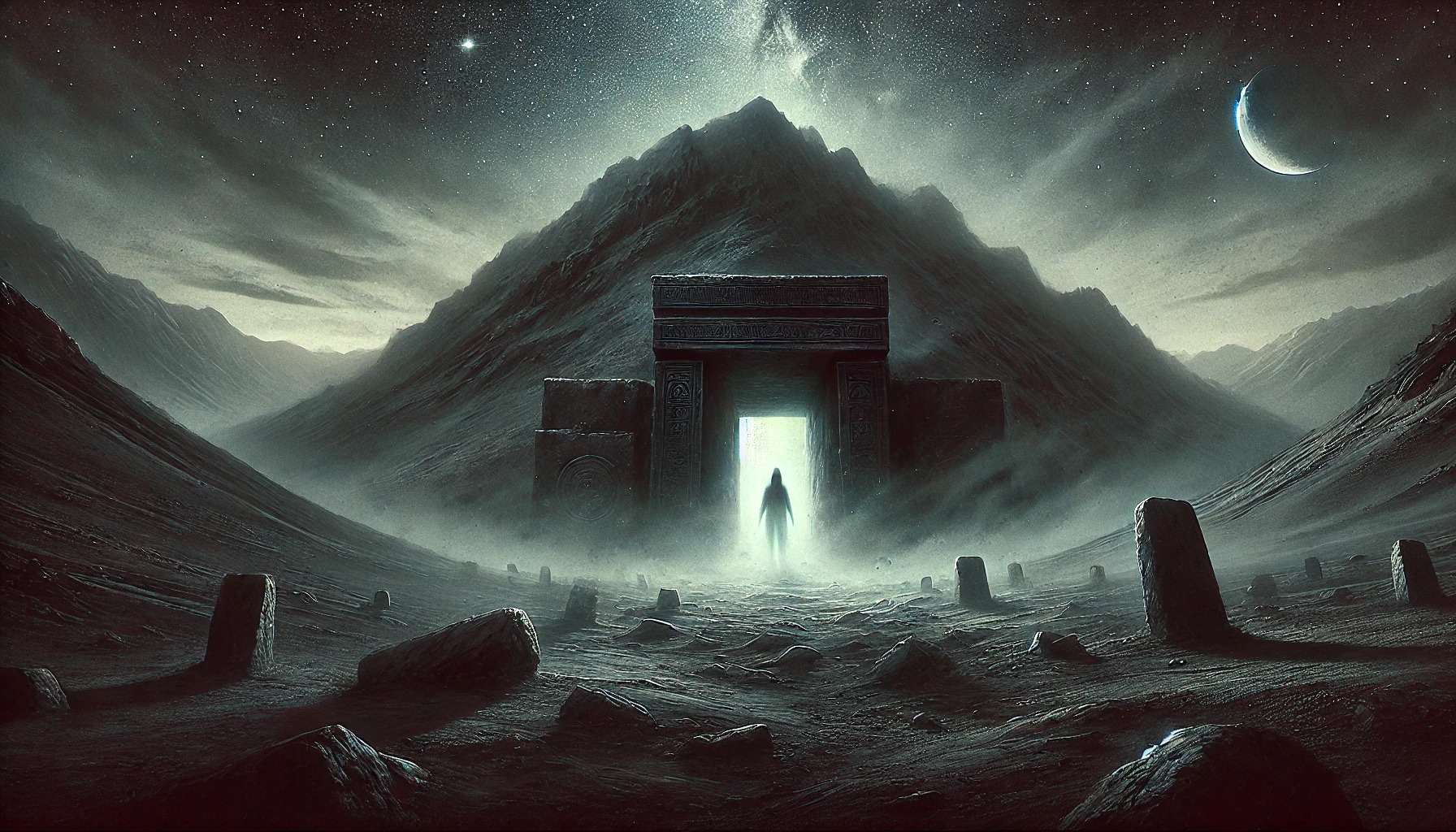
The Mapmaker’s Secret
When an ancient map resurfaces in a forgotten monastery, it points not to a lost city — but to a secret that could rewrite human history.
In 1872, deep within the Carpathian Mountains, Father Mikhail stumbled upon a hidden alcove while restoring the crumbling monastery of St. Elene.
Behind a loose stone in the chapel wall, he found it:
A brittle scroll, wrapped in oilskin, its ink faded but still legible.
It was a map.
But not any map.
The continents were oddly shaped, the oceans marked with names no scholar had ever recorded.
And there, drawn at the very center — a landmass where no modern map showed anything but open sea.
Terra Desolata.
The Desolate Land.
Father Mikhail, a quiet man of faith, tried to bring the map to the attention of church authorities.
They confiscated it immediately.
The very next day, the bishop overseeing the monastery declared the restoration project canceled without explanation.
Mikhail returned to his small village, troubled by dreams of endless, stormy oceans and strange cities of black stone.
Decades passed.
The map was forgotten — or so it seemed.
Until 1921, when a young historian named Elena Varga, digging through Vatican archives, stumbled upon a reference:
"Documentum Prohibitum 178 — cartographia aliena."
— Forbidden Document 178 — alien cartography.
Her inquiries were met with polite smiles and locked doors.
Undeterred, Elena found an aging Father Mikhail in a quiet hospice on the outskirts of Prague.
He barely spoke.
But the day before he died, he pressed something into Elena’s hand — a tiny, broken compass, its needle spinning wildly.
Etched into the back were two words:
"Find Them."
Following half-whispered clues and battered journal entries, Elena journeyed across the Atlantic, through forgotten archives, sunken libraries, and abandoned ports.
Everywhere she went, she found fragments:
Ancient charts hinting at civilizations long before Sumer or Egypt.
Ship logs of sailors who vanished chasing phantom lands.
Ruins that didn’t match any known culture, hidden where they shouldn’t exist.
The deeper she dug, the clearer the pattern became:
Terra Desolata wasn’t lost.
It was hidden.
And someone, across centuries and continents, had made sure it stayed that way.
The closer Elena got, the more accidents happened.
Documents stolen.
Witnesses silenced.
One night, in a fog-choked alley in Lisbon, a stranger brushed past her, slipping a slip of parchment into her coat.
No words — only a set of coordinates written in trembling ink.
Middle of the South Atlantic.
An empty point on every official map.
Elena booked passage on a ship the next morning.
She was last seen standing at the bow, staring out over a gray, endless sea.
Neither she nor the vessel were ever found.
But on stormy nights, fishermen claim they see a flicker of light far beyond the horizon —
and hear a woman’s voice, faint but insistent, carried on the wind:
"Find them..."
Behind a loose stone in the chapel wall, he found it:
A brittle scroll, wrapped in oilskin, its ink faded but still legible.
It was a map.
But not any map.
The continents were oddly shaped, the oceans marked with names no scholar had ever recorded.
And there, drawn at the very center — a landmass where no modern map showed anything but open sea.
Terra Desolata.
The Desolate Land.
Father Mikhail, a quiet man of faith, tried to bring the map to the attention of church authorities.
They confiscated it immediately.
The very next day, the bishop overseeing the monastery declared the restoration project canceled without explanation.
Mikhail returned to his small village, troubled by dreams of endless, stormy oceans and strange cities of black stone.
Decades passed.
The map was forgotten — or so it seemed.
Until 1921, when a young historian named Elena Varga, digging through Vatican archives, stumbled upon a reference:
"Documentum Prohibitum 178 — cartographia aliena."
— Forbidden Document 178 — alien cartography.
Her inquiries were met with polite smiles and locked doors.
Undeterred, Elena found an aging Father Mikhail in a quiet hospice on the outskirts of Prague.
He barely spoke.
But the day before he died, he pressed something into Elena’s hand — a tiny, broken compass, its needle spinning wildly.
Etched into the back were two words:
"Find Them."
Following half-whispered clues and battered journal entries, Elena journeyed across the Atlantic, through forgotten archives, sunken libraries, and abandoned ports.
Everywhere she went, she found fragments:
Ancient charts hinting at civilizations long before Sumer or Egypt.
Ship logs of sailors who vanished chasing phantom lands.
Ruins that didn’t match any known culture, hidden where they shouldn’t exist.
The deeper she dug, the clearer the pattern became:
Terra Desolata wasn’t lost.
It was hidden.
And someone, across centuries and continents, had made sure it stayed that way.
The closer Elena got, the more accidents happened.
Documents stolen.
Witnesses silenced.
One night, in a fog-choked alley in Lisbon, a stranger brushed past her, slipping a slip of parchment into her coat.
No words — only a set of coordinates written in trembling ink.
Middle of the South Atlantic.
An empty point on every official map.
Elena booked passage on a ship the next morning.
She was last seen standing at the bow, staring out over a gray, endless sea.
Neither she nor the vessel were ever found.
But on stormy nights, fishermen claim they see a flicker of light far beyond the horizon —
and hear a woman’s voice, faint but insistent, carried on the wind:
"Find them..."



Comments